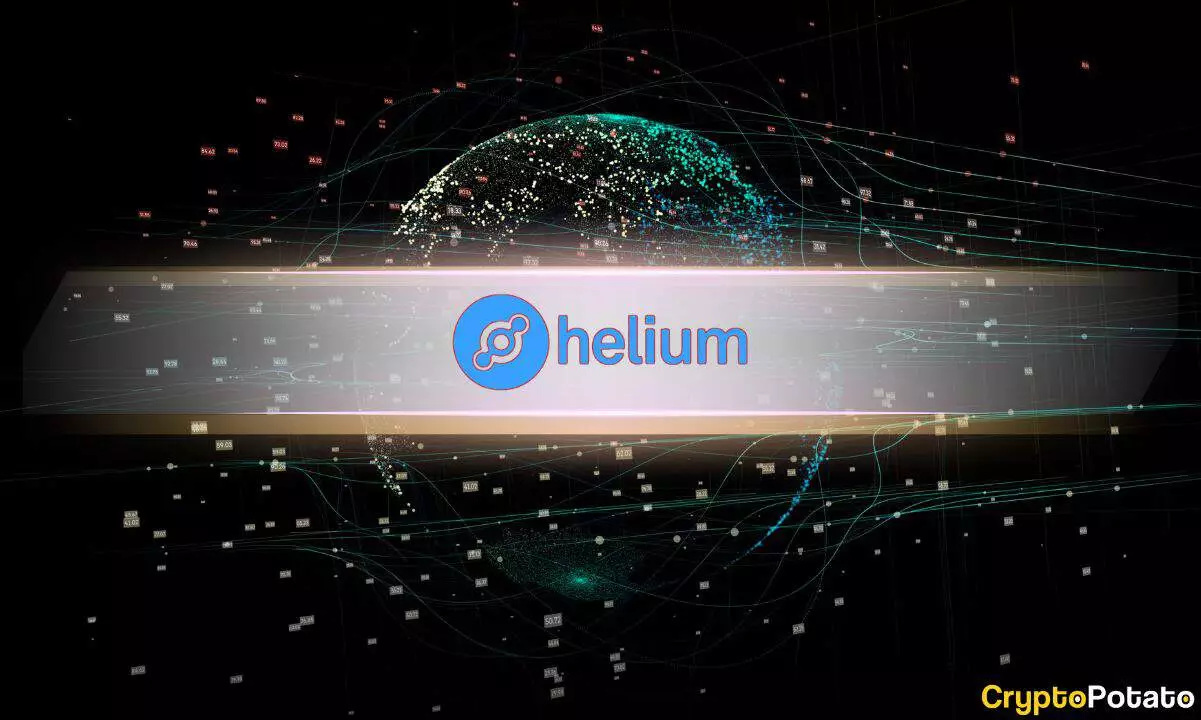Helium’s native token, HNT, epitomizes the paradox of a burgeoning digital asset flourishing amid economic adversity. In the fourth quarter, the token weathered a dramatic market decline, plummeting 20% in circulating market capitalization—dropping from a robust $1.3 billion to a troubling $1 billion. As the price spiraled downward to $5.88 from an earlier $7.54, it became evident that even an expanding user base and network infrastructure could not stave off the inevitable repercussions of broader market trends.
In this era where investors scrutinize digital currencies with a magnifying glass, Helium’s unapologetic expansion in network hotspots—growing from 21,800 to 24,800, marking a 14% increase—might suggest resilience. However, one must critically assess whether such growth is genuine or merely an illusion masking deeper issues. It begs the question: Can an influx of hotspots genuinely translate to sustainable demand when user engagement remains dim?
The Cost Factor: Can Helium Compete?
Despite the disheartening statistics, Helium Mobile has strategically positioned itself to challenge traditional telecommunications giants by offering unlimited plans at a fraction of the cost. These pricing strategies seem attractive against the backdrop of telecom providers often charging three-figure amounts. Yet, one must ponder: Are these price cuts sustainable in the long-term when user activity on the network remains fragmented at best?
The introduction of the Discovery Mapping feature, which incentivizes users in HNT for sharing location data, seemed like a savvy move to promote engagement. Yet, the transition to Cloud Points is troubling, raising doubts about Helium’s long-term commitment to decentralization. Such shifts signal a management team grappling with the core values of their platform, riskily prioritizing immediate monetization over foundational transparent governance.
Real-World Utility: A Double-Edged Sword
While Helium can boast of its resilience during crises—most notably maintaining operational 5G coverage during Hurricane Helene in North Carolina—this achievement is bittersweet. Offering 5G during a time of community distress is commendable, but will it build loyalty, or is it merely an isolated instance of utility? While dispersing emergency kits, including high-tech Starlink devices, painted a picture of corporate responsibility, many savvy analysts see it as an ostentatious publicity stunt rather than a long-term commitment to community engagement.
What is concerning is the stark realization that, even with an impressive infrastructural setup, the actual demand remains woefully underwhelming. Daily Data Credit (DC) burns register only a few hundred dollars, emphasizing that Helium has yet to catalyze significant adoption among its users. So, while the towers may rise, the metaphorical rocket launch that was anticipated remains stubbornly grounded.
The Shadows of Governance: Hoarding and Misrepresentation
Delving into the foundational ethics of the Helium project, we encounter another crucial issue—the alleged hoarding of early token rewards by founders and insiders. Reports from CryptoPotato reveal that insiders possibly mined HNT worth an unparalleled $250 million during peak times, redirecting the spoils while average investors received only crumbs. In a market where trust is paramount, such alleged misappropriations dangerously erode public faith.
Moreover, the discrepancies surrounding partnerships with companies like Lime and Salesforce reflect a broader issue regarding transparency. When a high-profile partnership is proved tenuous at best, it adds fuel to the skepticism surrounding the Helium brand. Statements of association have been misleading, and with the public wary of hyperbolic claims, Helium must confront the daunting task of rebuilding its credibility.
Final Thoughts: A Time for Reckoning?
As Helium forges onward amidst the turbulent seas of the cryptocurrency landscape, stakeholders wonder: Is the growth venture a sign of true innovation or simply a facade? The dichotomy between market metrics and operational capacity could define Helium’s fate in the long run. As it navigates through its identity crisis, one thing remains clear: the future hinges on not just survival but the cultivation of a loyal, engaged user community. Only time will tell if Helium can transform itself from a promising venture into an industry stalwart.
















Leave a Reply